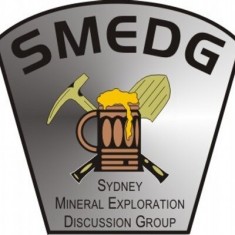|

Thursday, June 24, 2021
5.30 for 6.00 pm
Online via Zoom
On Zoom – room opens at 5.45 pm – please register here
V. J. Wall, presented by Greg Hall
A summary follows – a short paper can be downloaded here
Gold deposits accorded giant status in view of their tonnage-grade characteristics occur in a variety of geological environments. These associations are commonly termed “epithermal”, “porphyry”, “Carlin” and “orogenic”, etc. Although links between felsic plutonism and some large gold deposits have long been recognised in Eastern Block literature (eg, Moravek, 1979), the significance of a distinctive class of pluton-related gold deposits is less appreciated in the West (cf. Sillitoe & Thompson, 1998; Groves and others, 2003). This article examines the nature and evolution of thermal aureole gold (TAG; pluton-related) ore-forming systems and key factors in the localisation of some giant deposits in such systems. As the forerunner to a more comprehensive manuscript it is short on detail and long on assertion.
This is one of a series of talks that Greg is presenting as a tribute to Vic Wall, a significant figure in the geological sphere, who the email writer had the honour and pleasure to know. Vic unfortunately passed away in 2017 after a long fight with illness, and we urge you to read this obituary written by colleagues.
Greg Hall is a geological consultant of Golden Phoenix International Pty Ltd. Greg was Chief Geologist for Placer Dome Group from 2000 to 2006. He managed exploration in Western Australia for CSR Limited until 1988 and Placer Dome from 1988 to 2000. The discovery of Rio Tinto’s Yandi iron ore mine and Gold Fields’s Granny Smith gold mine in WA are highlights in his career.
He graduated from University of New South Wales in 1973 with Bachelor of Applied Science (1st Class Honours).